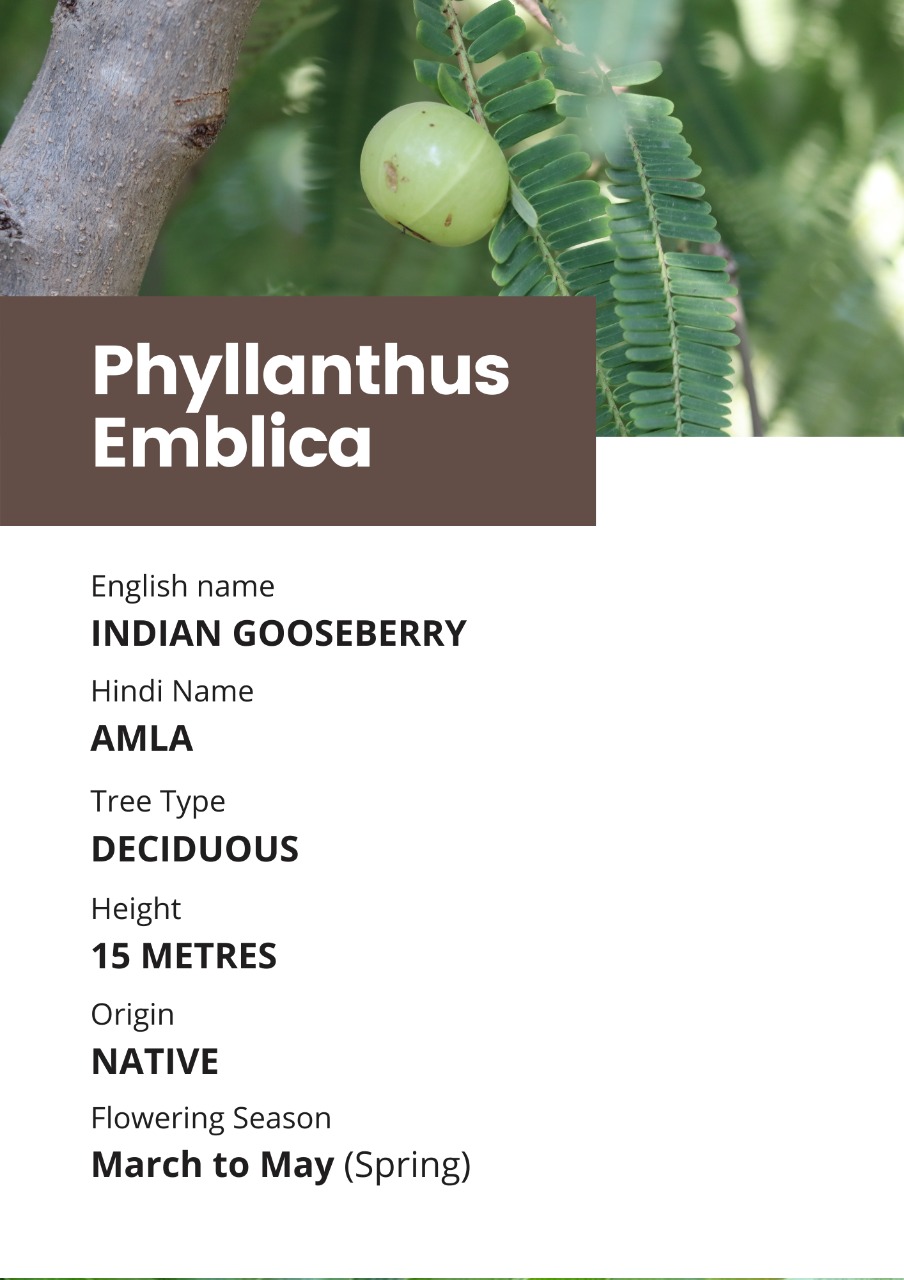
INDIAN GOOSEBERRY
Phyllanthus emblica (Amla):
Family: P. Emblica belongs to the Phyllanthaceae family
Common Name: It is commonly known as Amla in Hindi and Indian Gooseberry in English
Flowering period: The tree flowers from March to May
Habitat: It is native to India and well-suited to the Indian climate
Uses: The plant is used both as a medicine and as a tonic to build up lost vitality and vigor. Phyllanthus emblica is highly nutritious and could be an important dietary source of vitamin C, amino acids, and minerals. All parts of the plant are used for medicinal purposes, especially the fruit, which has been used in Ayurveda as a potent rasayana and in traditional medicine for the treatment of diarrhea, jaundice, and inflammation. Various plant parts show antidiabetic, antibacterial, antioxidant, antiulcerogenic properties.
Key features: Amla is a deciduous tree that can grow upto 15m tall. It has a greyish brown bark with irregular flaking and a pinkish red blaze. The tree also has simple closely overlapping leaves with an alternate form of arrangement. The leaflets are small and numerous and the drooping branches and branchlets slightly resemble compound leaves. Flowers usually bloom below the leaflets. These flowers are unisexual and greenish yellow in colour. They form clusters at the leaf axils. The flowers give way to capsule-like yellowish green fruits which resemble enlarged fleshy indehiscent berries.